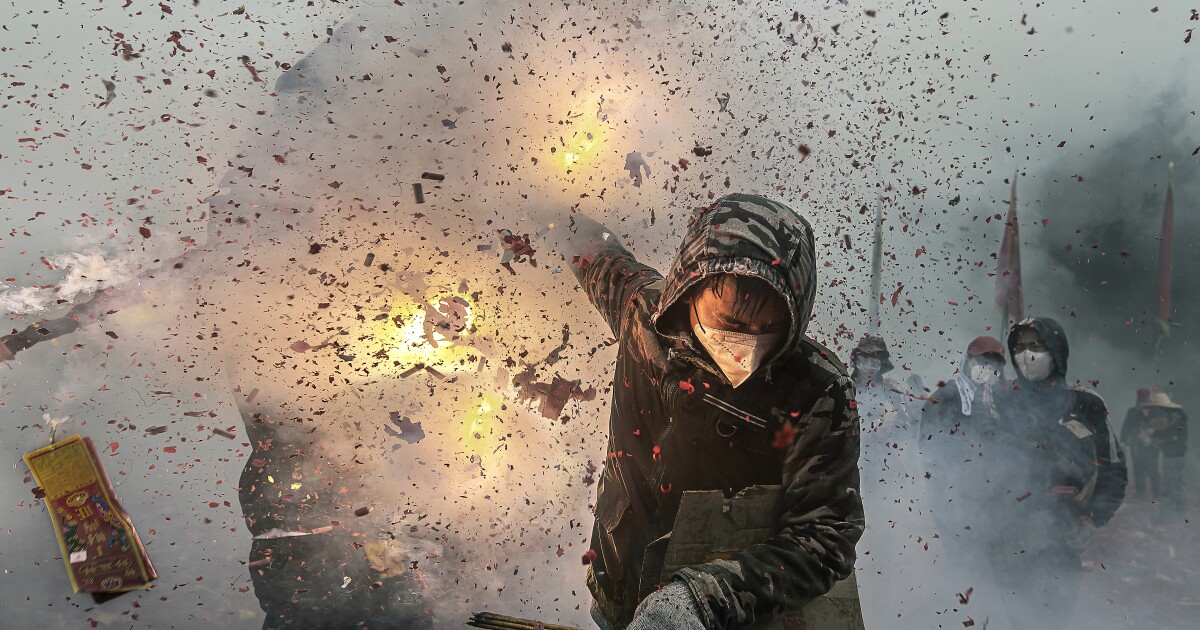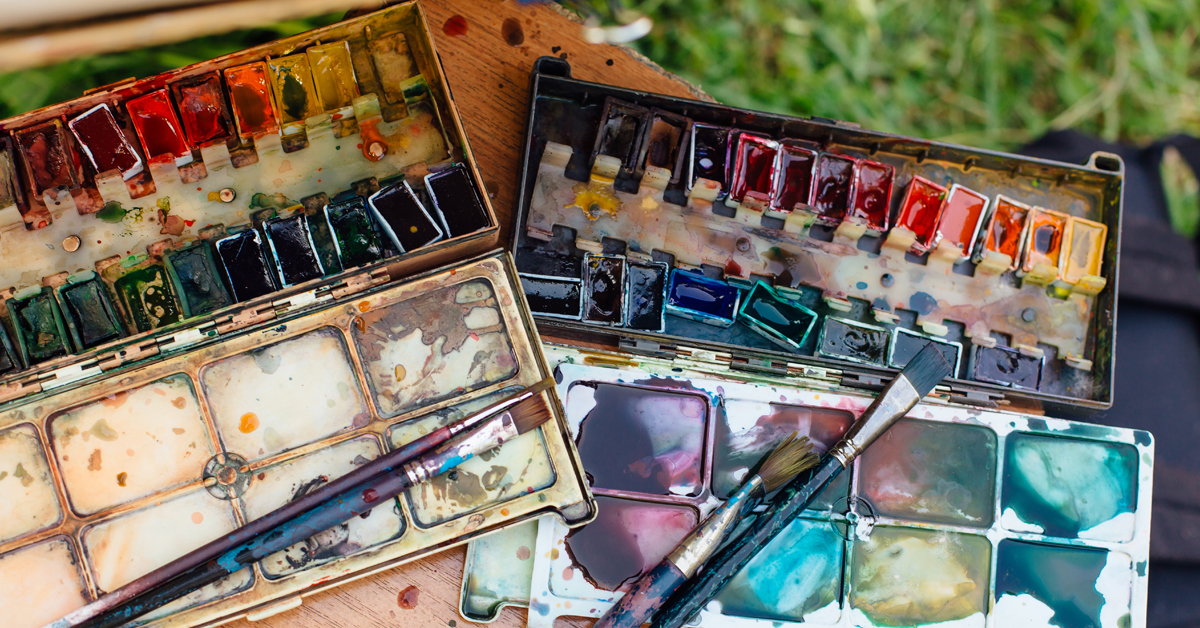- Breathing Light
- Posts
- Breathing Light #Issue 63
Breathing Light #Issue 63
Of Life and the Threads of Water

Six In this Issue
1. Taku Mahi Toi o Te wiki-My Image of the Week
2. Korero Timatanga-Frontispiece
3. Photographer's Corner-On Framing Your Work
4. Waiata mou te Ata-Poem for the day
5. Fevered Mind Links (to make your Sunday morning coffee go cold)
6. Koorero Whakamutunga-Endpapers
My Image of the Week
Taku Mahi Toi O te Wiki

Whiri i Te Wai ( threads in water), Roto-Ua, Fiordland 2019 | Fujifilm X-H1, XF 16-55/4
"You see, when weaving a blanket, an Indian woman leaves a flaw in the weaving of that blanket to let the soul out."
One day, I was driving alongside a river in the mountains and came to a place where the sun had found a gap in the trees and was pouring soft golden light over a bridge which crossed it. It was a lovely warm day, and I opted to stop, park the car, get out my camera and walk halfway across.
I leaned on the railing, staring down into the water some 5 m below, watching the patterns and threads as they formed, swirled and then separated, seemingly having done whatever they had come to do. Each moment was at once its own, yet part of a greater whole.
Abruptly the label "river" came off, and I no longer saw a river but rather a series of intentions and pre-determinations. I no longer saw a body of water moving as a whole from point A to point B but rather an interweaving series of moments, each complete in and of itself, yet part of a greater whole.
I realised then that while a river is a series of consecutive moments weaving past me, it simply IS. A river is constantly in motion, and yet its existence is No-Motion.
The heart of a river is a living paradox.
Later I began to reflect on how a river comes to be and not to be. I imagine that drop of rain falling from the skies, perhaps bouncing from leaf to leaf as gravity bullied it downwards. Then, at some point, it would join with another drop and another until it was part of a river.
Did the drop maintain its wholeness, its sense of identity, or did it lose that in becoming part of the river? Of course, it would be impossible to identify that single drop, yet I couldn't help feeling it was still individual and contained its own drop-Ness. It would be moving in its own way, following its unique journey. In some ways, the drop was the river, while the river was the drop.
And, if each drop was a writhing line of intention, how did all its companions interact with that and with each other?
And was I seeing a living metaphor for the human journey?
And how could the artist-me express that, document that almost infinite series of interactions? Did the truth lie in the journey of the drop- or the space between the journey of all of them?
Those sorts of thoughts can keep you up at night.
One day my friend, Kat, a tour boat skipper, invited me to spend the day while she ferried tourists up and down Lake Manapouri. Of course, I was going to go along.
She had a cunning plan.
“We don't have to hurry on the third trip,” she said. “We have one and 1/2 hours to get there.” (the journey usually took 40 minutes). “I think we might look up North Arm for a bit.” She winked.
I was on board. In every sense of the word.
When we got into the arm of the fjord, she slowed the boat and let me tell her what to do as I leaned out over the side.
I became captivated by how the light bounced and rippled on the water. I was utterly enthralled by how the boat’s passage carved and shredded the tranquil oneness of the water's surface.
And I couldn't help wondering, as I looked down into the boat wake, if I wasn't seeing all those threads of individual water-drop intention being liberated from some externally-imposed uniformity.
For a short time, at least.
Frontispiece

Wai me Kohatu (Water and Stone), Piopiotahi, 2019 | Fujifilm GFX 50r, GF 120/4
“Sometimes I wish I could photosynthesize so that just by being, just by shimmering at the meadow's edge or floating lazily on a pond, I could be doing the work of the world while standing silent in the sun.”
Atamaarie e te whaanau:
Good morning everybody.
There is something about books.
You may know the Japanese word tsundoku. According to my research, It is a combination of the words “tsunde” (letting things pile up), “oku” (to leave for a while) and “doku” (to read). In other words, it describes people who buy a lot of books but don't read them (for a while, at least).
Is that you?
Well, I know it describes me. I have a bookshelf full of beautiful books I fully intend to get around to reading.
One day.
A few weeks ago, I heard that Amazon was shuttering Book Depository, which has been my go-to for years. Apparently, it's part of their austerity drive. Given that they own Book Depository, I suppose it's understandable. However, I took the time to order a couple of books I've been eyeing for some time. The first of them arrived two days ago. It is a simple paperback but packed with things to think about.
Because I've been thinking about my next body of work, I've begun reading about indigenous responses to Te Taio ( the natural world) and how other native peoples see it.
Robin Wall Kimmerer is an American botanist, writer and professor. She is also a member of the Potawatomi people. Her book Gathering Moss: A Natural and Cultural History of Mosses combines science and personal reflection, asking us to explore and learn from the truth of mosses.
Books.
Real treasures. I don't believe you can have enough of them.
I've been wondering if there isn't a place in Breathing Light for books, a kind of virtual bookshelf for books you recommend, or books you think are essential and have made a difference in your life and might make a difference to others’ life journeys.
If you feel like it, send me a list of your favourite titles (currently available), and I'll add a bookshelf section and publish them there.
This week's newsletter is about water, the threads it weaves, and the interconnectedness of everything.
Photographer's Corner
On Framing your work

Whakatipu Kaa Tuka (Falls Creek), Te Ana-au | Fujifilm GFX 100, GF 45-100/4
Joy is sometimes a blessing, but it is often a conquest. Our magic moment help us to change and sends us off in search of our dreams. Yes, we are going to suffer, we will have difficult times, and we will experience many disappointments — but all of this is transitory it leaves no permanent mark. And one day we will look back with pride and faith at the journey we have taken.
Am I a photographer or an artist? Framing your work.
We may wonder whether we are photographers or artists on our journey along the road (I seem to have said that a lot). Some of us choose to see ourselves as the former, while others are keen to use the latter title. Nevertheless, we need to be seen as artists rather than photographers.
Of course, pinning a label to our chests, neither says one thing or the other. It's simply something we want to manifest.
I know I'm diving into deep shark-infested waters bringing up this topic, but it’s worth discussing.
Where we are on our journey is our personal assessment of where we are, the nature of our work, and how we would like others to see it.
I have some perspectives and would love to share those with you. In no way do I think these are accurate or to be taken as gospel, merely as things for you to think about in terms of your own practice.
I know there was a time when I wondered whether I was a photographer or an artist. I know I am not alone. Then, one day, I decided that I was an artist.
And that was enough for me.
My mentor of 20 years, Dick Poole, would get very fiery when somebody called him an artist. He was adamant that he was a photographer, pure and simple, making beautiful pictures with his camera, and that was all he ever aspired to be. So to call him an artist would invite a lot of wrath and four-letter words. So wisely (or cowardly), I opted for silence whenever the topic arose.
You see, I had sipped at the well of Art History and begun to see my work in a different light. After all, the camera was a tool for self-expression, and I felt a calling to wander down that road. I never told him, and he never asked. However, I suspected he was looking over my shoulder with a certain amount of disdain.
We are all at different stages on our photographic journey, and whenever I mentor people, I'm very conscious of where they are. In the beginning, the sheer joy of using a camera (or phone) and being able to make documents of the world through which we are passing is so exciting that we never stop to think about what we are doing. Creating a beautiful photograph and sharing it with others is a joy in and of itself.
I have noticed that in the beginning, people are fascinated by the technology of the chosen medium and learning to master it. Then, when they gain confidence, they begin to explore the different photographic genres. Landscape, portraiture, street photography and perhaps still life are all exciting rooms to be explored.
Then, one day, after all these quests, they begin to think about which room fascinates them the most. Then they begin to peg a stake in the sand. Suddenly it is portraiture which talks to them, or landscape photography or even portraiture. They have found their room in the Castle.
Now the journey begins.
Within that room, there are many rooms. All of them are informed and decorated by those who have been there before. There is much to be learned from studying the markings on the walls, absorbing the lessons in plain sight, integrating them and then using them as the basis for our self-expression.
When we begin to make work through the lens of our existence rather than the need to meet the needs of others, then I do believe we are beginning to make that transition.
The photographer documents faithfully while the artist interprets.
Ah.
Perhaps that is where the transition point lies.
The (pure) photographer seeks to document faithfully, holding himself to a set of agreed standards, while the artist wants to go further, finding new ways of looking at things.
Photography, by its very nature, would have us make likenesses. But, after all, accurate documentation was the reason it came into being in the first place.
Art, in and of its nature, would have us go further and ask us to be an actor in the dance rather than a spectator on the sidelines.
We are all individuals with our perspectives on the nature of things.
When we begin the dance with ourselves and seek to express the wonder of who we are and what we experience, I believe we are beginning to cross from a photographer to an artist.
Waiata Mou Te Ata-Poem For the Day
Following Water (Mist Song)

Mauri ( Essence), Fiordland | Fujifilm X-H1, XF 16-55/2.8
To trace the history of a river or a raindrop is also to trace the history of the soul, the history of the mind descending and arising in the body. In both, we constantly seek and stumble upon divinity, which like feeding the lake, and the spring becoming a waterfall, feeds, spills, falls, and feeds itself all over again.
My poetry often starts with a simple noticing, a glance that triggers some form of recognition within me. It may take days for the observation to turn into words, but that simple moment has started something.
I was standing at the sink in my kitchen, probably making my morning ritual coffee. The view through the window looks over the roofs of the neighbouring houses to the pine trees on the hill at the top of the terrace.
The autumn mists had returned to gently meander and loiter amongst the shadowed trees.
The following poem unfolded from that simple glance.
Following Water (Mist Song)
The misty-eyed autumn fog,
dressed in the roiling, rustling
thinskinned remnants of summer passed,
is vapouring in silent silken sighs
among the shadowtrees.
It lingers and loiters,
wandering among outstretched branches
clad in Havishamed parchment leaves with exposed, stitched veins,
the entry door to Winter,
to greendrift down
into the dankening, darkened ground,
to meander mycelial earthways,
and tombtime the wait for Spring.

Fevered Mind Links (to make your Sunday morning coffee go cold)
EndPapers
Koorero Whakamutunga

Stone and leaves in water, 2018 | Fujifilm GFX 50r, GF 120/4
“Rivers know this: there is no hurry. We shall get there some day.“
Nuts and bolts
I mentioned last week about having significant issues with my Microsoft 365 subscription. The fantastic Sam from Microsoft did an amazing job helping me navigate the labyrinthine pathways of sorting it out.
However, it isn't yet perfectly sorted. That will probably take a few more calls to Support.
People often ask me if they have my correct email address. To my shame and embarrassment, I have a number of these! They have come about as I've evolved, jinking this way and that, trying to find my turangawaewae (the place where I stand).
You may have a variety of different email addresses for me.
[email protected] is now the correct address. However, I would love you to update your address books if possible.
[email protected] will also get there.
As an interesting aside, it would seem that the days of Facebook, Instagram and Twitter are fading. So many of you have told me you're stepping away from social media. I can't say I blame you. Twitter is a particularly toxic swamp.
Perhaps honest communication between people is on the comeback trail.
Perhaps we will begin to have genuine, respectful conversations rather than fishing for likes or trolling each other.
I would love to know your thoughts.
Magnum opus
I've been watching a YouTube video, a trailer for Paul Simon's upcoming album, Seven Psalms. It's an extraordinary video about a man at the height of his powers, putting together something that has significant meaning for him. But it certainly is not the Paul Simon I remember from my youth. Instead, it is about a humble man (or a man whom Life has humbled) producing something devotional and inspired—a recommended watch. The link can be found above.
Particularly fascinating for me is the fact that the inspiration came to him in the early hours, from 0300 onwards. I have other creative friends for whom the early hours are when their particular muse comes calling, when things are particularly… sacred.
Do you have a particular time when you are at your most creative? When it feels as if you are a paintbrush in the Artists's hand?
As always, walk gently upon our Mother and be kind to each other.
He mihi arohaa nunui ki a koutou katoa
Much love to you all,
Tony.

(And water












Reply